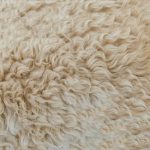When you're on the hunt for quality fleece, it's essential to consider several key factors that can significantly affect your comfort and performance. From the type of material to the weight and insulation properties, each choice impacts your experience in different environments. You'll want to evaluate durability, care instructions, and fit to ensure you make a smart investment. But how do you balance price and quality to get the best value? Understanding these aspects can make all the difference in your outdoor activities, so let's explore them in more detail.
Table of Contents
Key Takeaways
- Understand fleece types, such as microfleece and heavyweight fleece, to select appropriate warmth and breathability for your activities.
- Evaluate fleece weight: lightweight for layering, midweight for versatility, and heavyweight for cold conditions.
- Consider insulation properties, ensuring quality fleece retains heat while remaining lightweight for comfort during outdoor activities.
- Check for durability: high-quality materials resist pilling and wear, extending the lifespan of your fleece.
Understanding Fleece Materials
To choose the right fleece, you need to know the different types of materials and their properties. Fleece is typically made from synthetic fibers, primarily polyester, which offers excellent insulation and moisture-wicking capabilities. This material's lightweight nature makes it perfect for layering, keeping you warm without adding bulk.
Another option is microfleece, which is a finer version of traditional fleece. It's softer, lighter, and provides greater breathability, making it ideal for active outdoor activities. If you're looking for something warmer, consider heavyweight fleece, which has a thicker pile and offers superior warmth but may be less breathable.
You might also encounter fleece blends, combining materials like cotton or wool, which can enhance comfort and durability. These blends may offer different properties, such as added softness or breathability, but could also impact moisture-wicking capabilities.
Lastly, look for fleece with anti-pill treatment. This feature helps maintain a neat appearance over time, preventing the unsightly bobbles that can develop with regular wear. By understanding these materials and their benefits, you can confidently select the fleece that best suits your needs.
Evaluating Fleece Weight
Understanding fleece weight is crucial because it directly impacts warmth, breathability, and overall comfort during your outdoor activities. When you choose the right fleece weight, you're setting yourself up for a better experience, whether you're hiking, camping, or just enjoying a chilly day outdoors.
Here's how fleece weight can affect you:
- Lightweight Fleece (100-200 grams): Perfect for layering, these fleeces offer breathability in milder conditions. You'll feel cozy without overheating, making them ideal for high-energy activities.
- Midweight Fleece (200-300 grams): This weight strikes a balance between warmth and breathability. It's versatile enough for various conditions, so you can stay comfortable whether you're hiking or lounging by the fire.
- Heavyweight Fleece (300 grams and above): If you need serious warmth in freezing temperatures, heavyweight fleece is your go-to. It wraps you in a soft hug, keeping you cozy during those frosty nights.
Insulation Properties
When choosing fleece, you need to consider its insulation properties to keep warm in colder conditions.
Pay attention to thermal retention capacity, breathability factors, and the weight and thickness of the fabric.
These elements will determine how well your fleece performs in various temperatures and activities.
Thermal Retention Capacity
Quality fleece excels in thermal retention capacity, ensuring you stay warm without the bulk. This insulation property makes it a top choice for chilly weather, allowing you to enjoy outdoor activities without feeling weighed down. When you choose quality fleece, you're investing in comfort and performance. Here's why thermal retention matters:
- Warmth on Demand: You want to feel cozy, whether you're lounging at home or hiking through snow. Quality fleece traps body heat effectively, giving you that warm embrace you crave.
- Lightweight Convenience: Who wants to lug around heavy coats? Quality fleece offers warmth without the extra weight, making it easy to wear throughout the day without feeling restricted.
- Versatile Use: From chilly mornings to brisk evenings, quality fleece adapts to your needs. The right fleece can keep you warm during a winter walk or while camping under the stars.
Breathability Factors
Breathability in fleece is essential for keeping you comfortable during physical activities, allowing moisture and heat to escape while still providing warmth. When you're active, your body generates heat and sweat, so you need a fabric that manages moisture effectively. Look for fleece materials that incorporate advanced technologies, like moisture-wicking properties, which help draw sweat away from your skin.
Another factor to consider is the fleece's construction. Fabrics with a tighter weave may retain heat but can trap moisture, leading to discomfort. Opt for fleece with a more open structure, as this promotes airflow and enhances breathability. Ventilation features, such as zippered vents or mesh panels, can also help regulate temperature and moisture levels during intense activities.
Don't forget about the fleece's overall weight and thickness, as they can influence breathability. Lighter fleece tends to be more breathable, making it ideal for high-energy pursuits. Before making a purchase, try on different options to see how they feel during movement; this will give you a better idea of their breathability in real-life scenarios.
Prioritize comfort and functionality to ensure you enjoy your outdoor adventures.
Weight and Thickness
The weight and thickness of fleece play a significant role in its insulation properties, affecting how well it retains heat during colder conditions. When choosing fleece, you'll want to consider these aspects carefully to ensure you stay warm and comfortable.
Fleece comes in various weights, typically categorized as lightweight, midweight, and heavyweight. Each of these options serves different purposes and climates.
Here are three key factors to keep in mind:
- Lightweight fleece: Perfect for layering, it offers breathability while providing a light barrier against the chill, ideal for active pursuits.
- Midweight fleece: This is your go-to for versatility. It balances warmth and breathability, making it suitable for a variety of temperatures and activities.
- Heavyweight fleece: If you're braving the coldest conditions, this thicker option delivers superior warmth, wrapping you in coziness when you need it most.
Durability and Care
When it comes to fleece, understanding the material composition is key to ensuring durability.
You'll also want to follow the washing instructions closely to maintain its quality over time.
Lastly, knowing how to care for your fleece can significantly extend its lifespan and keep it looking great.
Material Composition Matters
Choosing fleece made from high-quality materials ensures durability and simplifies care, making it a practical choice for everyday wear. When you're out shopping for fleece, pay close attention to the material composition. It can make all the difference in how long your favorite piece lasts and how easy it's to maintain.
Here are three key benefits of choosing quality fleece:
- Longevity: High-quality fleece resists pilling and wear, so you won't have to replace it frequently, saving you money in the long run.
- Comfort: Premium materials provide a softer, more comfortable feel against your skin, making you look forward to wearing it every day.
- Versatility: Quality fleece can transition seamlessly from lounging at home to outdoor adventures, making it a staple in any wardrobe.
Washing Instructions Importance
Proper washing instructions are essential for maintaining the durability and appearance of your fleece. When you wash your fleece incorrectly, it can lead to pilling, fading, and even shrinking. Always check the care label before tossing it in the washing machine. Most fleece items recommend a gentle cycle with cold water to prevent damage.
Avoid using fabric softeners or bleach, as these can break down the fibers and compromise the fabric's integrity. Instead, opt for a mild detergent that's free from harsh chemicals.
When it's time to dry your fleece, consider air-drying it instead of using a dryer, as high heat can cause shrinking and affect the texture. If you do use a dryer, set it to low heat. This way, you'll help preserve the fleece's softness and shape.
Keeping your fleece clean and fresh won't only maintain its appearance but also its warmth and functionality. Regularly following these washing instructions will extend the life of your fleece, ensuring it stays a go-to item for comfort and style.
Taking care of your fleece means you can enjoy it for many seasons to come.
Lifespan and Maintenance Tips
Maintaining your fleece not only enhances its lifespan but also ensures it remains a reliable choice for warmth and comfort.
To keep your fleece in top condition, follow these essential care tips that make a real difference:
- Wash with Care: Always use cold water and a mild detergent. Avoid fabric softeners, as they can damage the fibers and reduce breathability. A gentle wash preserves the fabric's integrity, so your fleece stays cozy and soft.
- Air Dry: Instead of tossing your fleece in the dryer, hang it up to dry. This prevents shrinking and helps maintain its shape, ensuring you can enjoy your favorite fleece for years to come.
- Store Properly: When it's time to put your fleece away, fold it neatly and store it in a cool, dry place. Avoid hanging it, as this can stretch the fabric. Proper storage keeps it fresh and ready for your next adventure.
Fleece Types and Styles
When it comes to fleece, you'll find a variety of types and styles that cater to different needs and preferences. One popular type is polar fleece, known for its lightweight warmth and moisture-wicking properties. It's great for layering, making it ideal for both casual wear and outdoor activities.
Then there's microfleece, which is even lighter and softer. This type is perfect for those chilly mornings when you want something cozy without the bulk. If you're looking for something more robust, consider bonded fleece. This style combines two layers for extra insulation, making it a fantastic choice for colder climates.
You might also encounter fleece jackets, hoodies, and pants, each offering unique features. For instance, zip-up fleece jackets provide ventilation, while pullovers are perfect for a snug fit. Moreover, you'll see styles with hoods and pockets, adding functionality.
Don't forget about fleece blankets, which are great for coziness at home or on the go. As you explore your options, think about your specific activities and preferences to find the fleece that's just right for you.
Sizing and Fit Considerations
Choosing the right size and fit for your fleece is key to ensuring comfort and effectiveness in various activities. When you're out hiking, running, or simply lounging, the last thing you want is to feel restricted or overly bulky. Here are three essential factors to consider:
- Layering Potential: Think about what you'll wear under your fleece. A snug fit allows for easy layering, but don't go too tight. You want enough room for movement without feeling like you're in a straightjacket.
- Length and Coverage: Pay attention to the length of the fleece. You need enough coverage to keep the chill out. Look for styles that reach your hips or lower, especially if you'll be bending or stretching.
- Sleeve Fit: Don't overlook the sleeves! They should allow for easy movement without being too loose. A good fit can prevent cold air from sneaking in and ensures you can comfortably raise your arms.
Price Vs. Quality
Finding the right balance between price and quality in fleece can significantly impact your overall satisfaction and performance. While it's tempting to go for the cheapest option, lower-priced fleeces often compromise on warmth, durability, and comfort. You'll want to consider the long-term value of your investment. Sometimes, spending a bit more upfront can save you money in the long run by reducing the need for replacements.
Here's a quick comparison to help you navigate your choices:
| Price Range | Quality Level |
|---|---|
| Under $30 | Basic, less durable |
| $30 – $60 | Decent, moderate warmth |
| $60 – $100 | Good, reliable warmth |
| $100 – $150 | High-quality, durable |
| Above $150 | Premium, top performance |
When you evaluate fleece options, think about what features matter most to you. Whether it's breathability, softness, or moisture-wicking properties, aligning these features with your budget will ensure you choose a fleece that meets your needs. Remember, investing in a quality fleece can enhance your outdoor experiences significantly.
Frequently Asked Questions
Is Fleece Eco-Friendly and Sustainable?
Fleece can be eco-friendly if made from recycled materials, but many types are derived from petroleum-based plastics. You should look for brands that prioritize sustainability and use recycled fibers to minimize environmental impact.
Can Fleece Be Recycled After Use?
Yes, fleece can be recycled! Many recycling programs accept fleece, transforming it into new products. Check local facilities or brands that offer take-back programs to ensure your used fleece gets a second life.
How Does Fleece Compare to Wool?
When comparing fleece to wool, you'll find fleece is lighter, dries faster, and is often more affordable. However, wool offers better insulation and is more breathable, making it a classic choice for cold weather.
What Are Common Fleece Blends Available?
You'll find common fleece blends like polyester and cotton or polyester and spandex. These combinations enhance durability, stretch, and comfort, making them ideal for activewear and casual clothing while providing warmth without the weight.
Are There Hypoallergenic Fleece Options?
Yes, there are hypoallergenic fleece options available. Look for fleece made from synthetic materials like polyester, which typically don't trigger allergies. Always check product labels and consult with manufacturers for specific hypoallergenic guarantees.
- How Does Ring Spun Cotton Affect Garment Fit and Shape Retention? - August 13, 2024
- What Are the Challenges in Producing Ring Spun Cotton? - August 13, 2024
- Is Ring Spun Cotton Suitable for Plus-Size Clothing? - August 13, 2024







